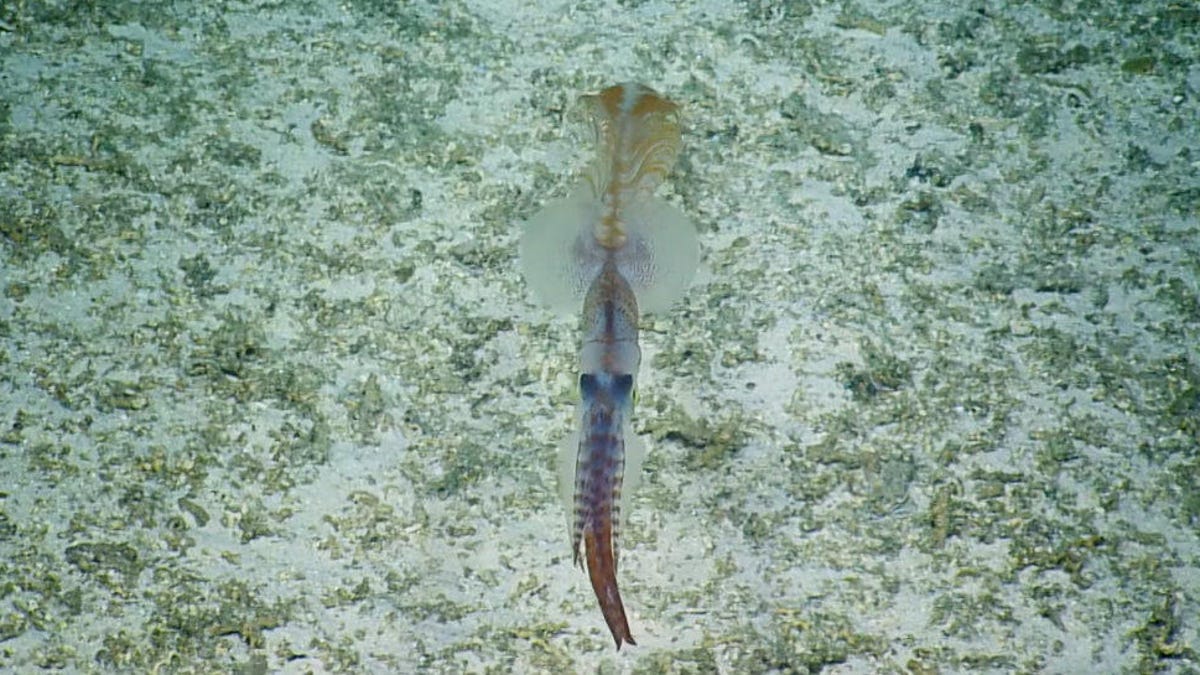Sinuous squid filmed alive for first time, and it's plenty weird
There are sea monsters, and then there are sea marvels.
Few things are as delightful as listening to the enthusiastic scientists on board the E/V Nautilus when they see something wild and wonderful deep beneath the waves. They spotted a totally bizarre squid on an expedition and it turned out to be quite a rarity.
The video footage is the first known to show the deep-sea squid Asperoteuthis mangoldae alive. The squid is a relatively recent discovery. "It's like a unicorn," one researcher says.
The squid made its appearance in early July near Jarvis Island in the Pacific Remote Islands Marine National Monument, home to what the National Oceanic and Atmospheric Administration describes as "some of the most pristine coral reefs in the world."
The rare squid sports a long, sinuous tail that's on full display in the video. "In related squids, the tail has been interpreted as making the squid look like another kind of animal, such as a siphonophore that has powerful stinging cells," said NOAA zoologist Michael Vecchione in a release on Friday. Siphonophores are long marine critters related to jellyfish and corals.
The scientists were intrigued to witness how the squid manages to swim with such a showy tail. It turns out it can tuck in the sides of the tail and make itself very streamlined.
This amazing sea creature joins a list of amazing animals seen by Nautilus during its journeys, including an adorable dumbo octopus, a giant red jellyfish and a freaky gulper eel. It's easy to see why these scientists get so excited.


